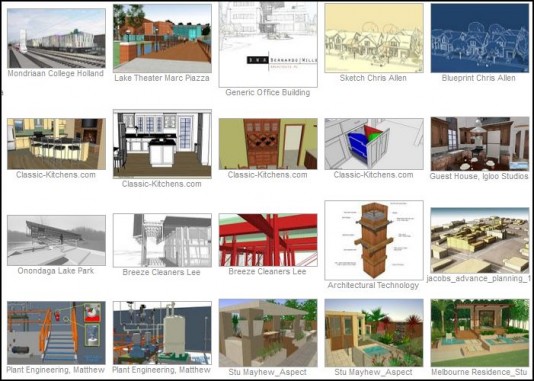Serial acquirer Trimble continues to assemble a construction engineering BIM portfolio. SketchUp extendability is considered a major asset.

By Randall S. Newton
Trimble (Nasdaq: TRMB) announced today it is acquiring SketchUp from Google. A sale of the popular 3D drafting tool has been rumored for weeks, but it was widely assumed the buyer would be Dassault Systèmes. This is Trimble’s third acquisition in 2012. The deal is expected to close no later than June 3o, 2012.
Trimble is best known as a provider of GPS technology, but for the past five years it has been assembling a wide range of companies and technologies to build a portfolio for built environment data usage. It already owns a variety of products for field data models, project management, structural engineering, and network/utility construction and operations. In a statement, Trimble says the SketchUp acquisition will “enhance our ability to extend our existing market applications including the cadastral, heavy civil, and building and construction industries.”

SketchUp has both an Application Programming Interface (API) based on Ruby for program customization and a Software Development Kit (SDK) in C++. Having ready-made programmability will make it easier for Trimble, its distribution partners, and third-party developers to create new applications and for Trimble to integrate SketchUp into its wide range of products.
Terms of the deal were not disclosed; the purchase price was described as “not material” to the company’s revenue. “Not material” is a specific financial term, meaning the acquisition was no more than 5% of the acquiring company’s annual revenue. If Trimble paid Google 5% of its 2011 revenue, the purchase price would have been $90 million. If so, Google more than doubled its initial investment in SketchUp six years ago; analysts at the time speculated Google paid @Last Software anywhere from $15 to $45 million for SketchUp. CAD industry analyst Brad Holtz, CEO of Cyon Research and host of the annual COFES conference, notes there were 30 million downloads of SketchUp in 2011. Put a value of $3 per user and $90 million seems like a reasonable ceiling for what Trimble paid.
SketchUp currently claims 2 million active users per week, based on their ability to track how downloaded copies are used. On an average week, between one-third and one-half of those active users are running SketchUp Professional, which retails for $495. As one SketchUp employee says regarding market presence, “If Autodesk or Bentley is there, so are we.”
Why Trimble? Why SketchUp?
Trimble seeks to be a leader in Building Information Modeling (BIM). Most BIM software companies approach the market from the architecture side, but Trimble is assembling its BIM portfolio focusing on construction. Trimble says its BIM focus “is on the deployment of integrated solutions for the contracting community, with enhanced use further in the construction process including BIM to Field.” It further defines BIM to Field as “extending the design data created in the office down to field level systems for precise delivery of design and construction elements.” Trimble will likely use SketchUp to tie together the various loose ends that have come with acquiring so many products so quickly.
There was considerable hype when Google acquired SketchUp in 2006, hot on the heels of Google’s acquisition of Keyhole, the creator of Google Earth. The vision was for an army of SketchUp users to populate Google Earth with realistic models of buildings across the globe. While that has happened to some degree, it stopped being of keen interest to the Google mother ship a long time ago. Giving SketchUp a new home within a BIM company—one that is wholly devoted to built assets and digital data—should give the SketchUp team a new sense of mission and enthusiasm. Perhaps the hiring office Autodesk opened recently in Boulder, Colorado—SketchUp’s home town—won’t get as much traffic as Autodesk planned.






